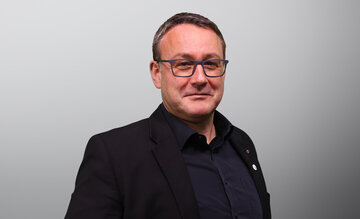Large-scale, high-resolution multi-electrode array for neuronal applications
Multi-electrode arrays (MEA) are small devices which pick up electric signals from nerve cells and can transmit signals to nerve cells. Thus they represent a neuronal interface with which nerve cells can be connected with electronic switches. Depending on the application, one differentiates between implantable (in vivo) and non-implantable (in vitro) MEA. In vitro arrays are used in particular for the stimulation and the microscopic monitoring of cell and tissue culture testing. In vivo arrays are used, e.g. as brain pacemakers for the treatment of impaired movement in Parkinsons patients and as heart pacemakers, as well as in cochlea implants, making it possible for deaf people to hear, and in retina implants, making it possible for blind patients to be able to see.
The research project focuses on the improvement of flexible in vivo arrays. It will be attempted to produce a very high spatial and temporal resolution with very good signal quality, i.e. the MEAs produced should be bigger and with significantly higher electrode thickness than previous extensive MEAs. The goal is the manufacture of biocompatible demonstrator with long-term stability.
The individual chips in the MEAs will be extremely thin and thus also flexible. Preamplifiers, multiplexers and other signal processing elements will be integrated, which process the neurosignals captured over the electrodes and relay them for signal analysis. The chips will be set in a printed circuit board of flexible polyimide. During the project we will also investigate whether stimulation signals can be generated directly in the array and transmitted to certain electrodes.
